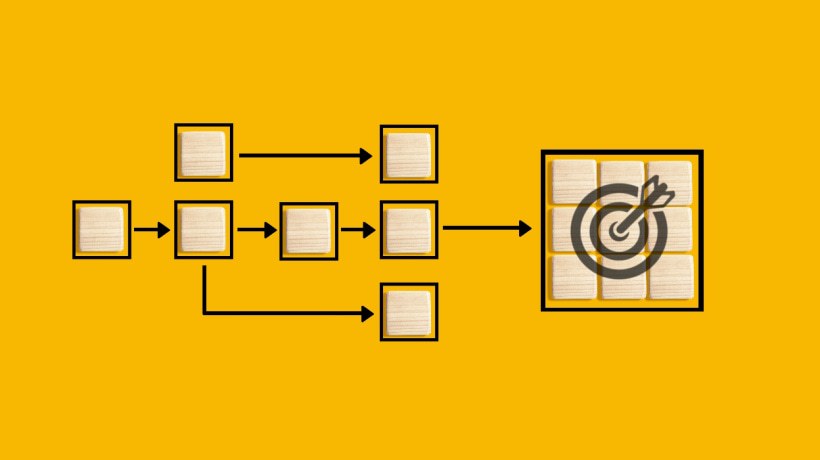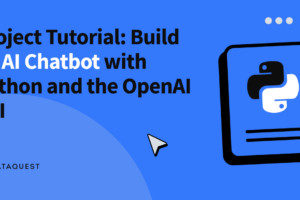
BPM-Integrated Learning Systems For L&D Success

How BPM-Driven Learning Transforms Engagement At Work
Employee engagement has become one of the most critical factors for organizational success in today’s dynamic workplace. Engaged employees are more productive, innovative, and loyal to their organizations. Yet, as workforces grow more distributed and job roles evolve rapidly, businesses face a challenge: how can they design Learning and Development (L&D) programs that not only deliver knowledge but also foster genuine engagement? The answer lies in integrating Business Process Management (BPM) principles into learning systems. By aligning learning workflows with organizational processes and automating repetitive tasks, BPM-driven systems don’t just deliver training—they create engaging, personalized, and measurable learning journeys.
This article explores how BPM-integrated learning systems enhance employee engagement, why they matter, and how organizations can adopt them for long-term success.
Understanding BPM In The Context Of L&D
At its core, Business Process Management (BPM) is about mapping, analyzing, and optimizing organizational workflows. It ensures that processes are efficient, consistent, and adaptable to change. When applied to L&D, BPM brings structure and scalability to training initiatives.
A BPM-integrated learning system is not just a digital repository of courses—it’s a dynamic platform where workflows like enrollment, assessments, feedback collection, and progress tracking are automated and connected to business objectives. Instead of being isolated from day-to-day operations, learning becomes part of the organizational fabric.
This integration directly impacts engagement: employees experience smooth, personalized learning pathways, while L&D teams gain the flexibility to continuously improve training processes.
Why Employee Engagement Matters In Learning
Before diving into BPM’s role, it’s important to understand why engagement is central to learning success. Research consistently shows that engaged learners:
- Retain knowledge better and apply it in real-world contexts.
- They are more likely to complete training programs.
- Develop stronger emotional connections with their organization.
- Feel more motivated to upskill and reskill in line with career growth.
For remote and hybrid workforces, engagement is even more vital. Without in-person interactions, employees can quickly feel disconnected, and traditional training methods—long webinars, static modules, or generic courses—often fail to spark interest. BPM-integrated learning systems provide the structure and personalization needed to combat disengagement.
How BPM-Integrated Learning Systems Boost Engagement
1. Personalized Learning Journeys
One-size-fits-all training rarely resonates. With BPM, workflows can be tailored to employee roles, career stages, and performance data. For example, when an employee is promoted, BPM-driven systems automatically update their learning path to include leadership modules. Personalization makes learning relevant, which naturally increases engagement.
2. Seamless Onboarding Experiences
First impressions matter. Traditional onboarding often overwhelms new hires with scattered information. A BPM-integrated learning system automates the onboarding process—assigning role-specific modules, scheduling check-ins, and tracking progress—ensuring a smooth, engaging start that boosts confidence and retention.
3. Gamification Through Process Design
Gamification isn’t just about points and badges. BPM allows gamified elements—such as milestone recognition, automated rewards, or level-based progressions—to be built into the workflow itself. This creates a sense of achievement and motivates learners to stay engaged.
4. Timely Nudges And Reminders
Engagement often drops when learners lose momentum. BPM-driven automation sends reminders, notifications, and encouragement at just the right time, helping employees stay on track without feeling pressured by managers.
5. Feedback Loops That Drive Improvement
Engagement is a two-way street. BPM-integrated systems automate post-training feedback collection and aggregate responses into dashboards. This allows L&D teams to act quickly, improving content and delivery methods while showing employees that their input matters.
6. Integration With Daily Workflows
Employees engage more when learning feels natural, not disruptive. BPM makes it possible to integrate training with existing workflows—for example, embedding microlearning modules into daily collaboration tools. This makes learning continuous and contextual.
7. Transparent Progress Tracking
Engagement grows when learners see their progress. Automated dashboards powered by BPM provide employees with real-time updates on their learning journey, giving them a sense of ownership and accomplishment.
The Strategic Benefits Beyond Engagement
While employee engagement is the primary goal, BPM-integrated learning systems deliver broader organizational benefits:
- Scalability
Training can expand to large, distributed teams without overwhelming administrators. - Compliance
Automated workflows ensure mandatory training is completed on time, reducing risks. - Data-driven decisions
BPM generates real-time insights into training effectiveness, skills gaps, and learner behavior. - Efficiency
Manual administrative tasks are minimized, allowing L&D professionals to focus on strategy.
These BPM benefits ultimately reinforce engagement by making learning more effective and meaningful.
Manual Vs. BPM-Integrated Learning Workflows
To truly understand the transformation, let’s compare traditional manual workflows with BPM-integrated ones:
- Enrollment
In manual systems, employees sign up via spreadsheets or emails. With BPM, enrollment is automatic, triggered by role changes, new hires, or performance data. - Reminders
Traditionally, managers send emails to chase learners. BPM automates personalized nudges, keeping learners engaged consistently. - Feedback
Manual surveys are slow to compile, often delaying improvements. BPM automates survey distribution and aggregates insights instantly. - Reporting
Manual compilation of learning outcomes takes weeks. BPM provides real-time dashboards, making progress visible for both employees and managers.
This shift shows how BPM doesn’t just digitize learning—it transforms it into an integrated, engaging experience.
Overcoming Challenges In BPM-Integrated L&D
Despite its advantages, adopting BPM-integrated learning systems comes with challenges:
- Change resistance
Employees and managers may initially resist automation, fearing a loss of human interaction. - Customization efforts
BPM workflows must be tailored to each organization’s culture and processes. - Integration complexity
Learning systems need to sync with existing HR, performance, and collaboration tools. - Cost considerations
Initial investments can be significant, though they pay off in long-term engagement and efficiency. - Balancing automation with human touch
While processes are automated, human trainers must still play an active role in mentoring and coaching.
These challenges can be overcome through phased implementation, clear communication, and continuous feedback loops.
KPIs To Measure Engagement In BPM-Integrated Learning Systems
To evaluate success, organizations can track Key Performance Indicators such as:
- Training completion rates
Higher rates indicate stronger engagement. - Course satisfaction scores
Direct feedback on content and delivery. - Learner participation
Measured through discussion forums, quizzes, or optional modules. - Skill improvement metrics
Assessments before and after training. - Compliance adherence
Percentage of employees completing required modules on time. - Time-to-productivity
Especially for new hires, tracking how quickly employees ramp up after training.
These KPIs show how engagement translates into measurable business outcomes.
The Future Of BPM In L&D
The integration of BPM into learning systems is only the beginning. Looking ahead, we can expect several trends that will further boost engagement:
- AI-driven personalization
Learning paths will be tailored in real time, adapting to employee performance and preferences. - Predictive analytics
BPM systems will anticipate skills gaps and proactively assign training. - Adaptive workflows
Processes will evolve dynamically as organizational needs change. - Immersive learning experiences
Integration with AR/VR tools will make workflows more interactive and engaging. - Continuous learning culture
With BPM, learning will be embedded into daily operations, making engagement an ongoing process rather than a one-off goal.
Best Practices For Implementing BPM-Integrated Learning Systems
To maximize employee engagement, organizations should follow these best practices:
- Start with high-impact workflows
Automate onboarding or compliance first, then scale gradually. - Engage stakeholders early
Include managers, trainers, and learners in designing workflows. - Prioritize User Experience
Ensure systems are intuitive and supportive, not overwhelming. - Maintain the human element
Balance automation with mentorship and personal interaction. - Iterate and improve
Use BPM’s strength in continuous improvement to refine workflows based on feedback.
Future Outlook: BPM, AI, And Employee Experience (EX)
The future of employee engagement is moving beyond siloed L&D systems and toward seamless, hyper-personalized learning ecosystems. At the center of this evolution is the convergence of Business Process Management (BPM), Artificial Intelligence (AI), and employee experience (EX) platforms.
BPM As The Backbone
BPM already provides structure and automation to learning workflows. But on its own, it’s process-focused.
AI As The Brain
When combined with AI, BPM systems can analyze engagement data in real time, detect patterns in learner behavior, and recommend interventions tailored to each employee. Imagine a system that sees an employee struggling with compliance training and automatically offers bite-sized learning modules or coaching nudges.
EX As The Lens
Employee experience tools bring in the human element, ensuring that learning is not just efficient but also emotionally engaging. For example, integrating wellness check-ins, recognition systems, or social learning opportunities into BPM workflows creates a more holistic and supportive environment.
This synergy creates what’s often referred to as a Learning Experience Ecosystem (LXE)—a network where every interaction, from onboarding to leadership development, is personalized, adaptive, and embedded in day-to-day work. In the future, leaders will look at BPM not merely as an L&D enabler but as a strategic foundation for workforce engagement and growth. By tying process optimization to human experience, companies can deliver learning that not only drives skills but also boosts morale, retention, and organizational agility.
Actionable Checklist For Leaders
If you’re considering integrating BPM into your learning and engagement strategy, start small but think big. Here’s a simple roadmap:
Map Your Current Learning Workflows
- Document how training requests, approvals, delivery, and feedback currently flow.
- Identify points where employees feel delayed or disengaged.
Identify Bottlenecks That Frustrate Employees
- Look for repetitive manual tasks (e.g., duplicate data entry, multiple approval layers).
- Gather employee feedback to understand their learning pain points.
Start Automation In High-Friction Areas
- Quick wins like onboarding, compliance, or certification renewals deliver immediate impact.
- Use BPM to standardize and speed up these processes, freeing up employees for meaningful learning.
Personalize Through AI Where Possible
- Integrate AI-powered nudges, recommendations, or sentiment analysis to adapt learning to each individual.
- Pair BPM with analytics dashboards to monitor engagement trends.
Measure Engagement KPIs Before And After BPM Integration
- Track metrics like training completion rates, employee satisfaction, learner feedback scores, and retention.
- Use these insights to continuously refine the workflows.
Embed BPM In Your Broader Employee Experience Strategy
- Align L&D workflows with HR, IT, and performance management processes.
- Ensure employees see learning as part of their daily journey, not a separate task.
Conclusion
Employee engagement is no longer a “nice-to-have.” It has become a critical business imperative. In the context of Learning and Development, disengaged employees can lead to wasted resources, missed opportunities, slower innovation, and reduced overall performance. Traditional training methods often fall short, particularly in remote or hybrid environments, where learners may feel disconnected or overwhelmed by scattered processes.
BPM-integrated learning systems address these challenges by aligning training initiatives with organizational processes, automating repetitive tasks, and delivering personalized, adaptive learning experiences. By streamlining workflows such as onboarding, compliance, and upskilling, these systems free L&D teams to focus on high-value activities like mentoring, coaching, and content innovation. This combination of automation and human-centered design ensures that learning is not only efficient but also meaningful and engaging for employees.
Moreover, BPM-driven systems provide real-time analytics and feedback, enabling organizations to continuously refine their learning strategies and respond to employee needs. For businesses operating in fast-changing markets, where agility and skill development are paramount, integrating BPM into learning workflows unlocks sustained engagement, higher retention, and better performance.
In essence, BPM tools transform training from a static task into a strategic driver of employee growth, motivation, and long-term organizational success.
Source link



